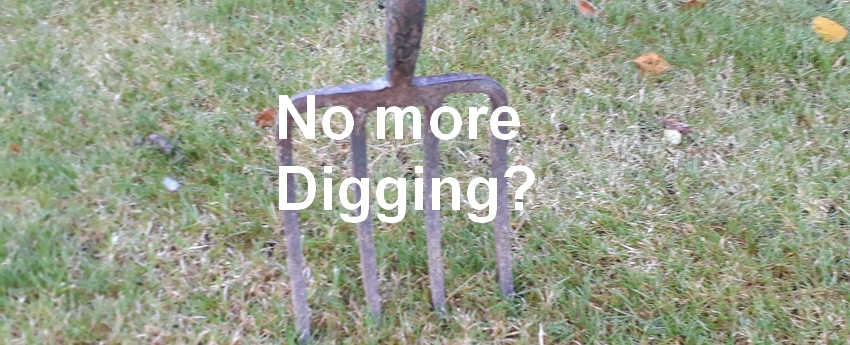What is No Dig gardening
October is a month when we see the last of the summer flowers and vegetable harvests and start to think about preparing the garden for next year. This is particularly true of a vegetable plot or allotment where the traditional autumn activity is to dig over the empty ground. Older gardening books will even recommend double digging – which is just as hard work as it sounds! – to a depth of 35-40cm.
 However, we now understand better how soil behaves, not just an inert substance to anchor roots, but layers of soil texture and content with a complex community of organisms living in it. From the visible beetles and worms to fungi and microscopic bacteria all have a vital role in preserving soil health and therefore the ability to support plant growth. What we also know is that top soil with a loose structure and large air and water spaces supports a different set of organisms than the more solid sub soil beneath. Why this matters to gardeners and is good news for those of us who do not fancy double digging, is because digging up sub soil and burying top soil not only upsets the balance of the micro-life, it also releases carbon dioxide into the atmosphere that was previously stored in the soil. And the last thing that earth needs is more free carbon dioxide.
However, we now understand better how soil behaves, not just an inert substance to anchor roots, but layers of soil texture and content with a complex community of organisms living in it. From the visible beetles and worms to fungi and microscopic bacteria all have a vital role in preserving soil health and therefore the ability to support plant growth. What we also know is that top soil with a loose structure and large air and water spaces supports a different set of organisms than the more solid sub soil beneath. Why this matters to gardeners and is good news for those of us who do not fancy double digging, is because digging up sub soil and burying top soil not only upsets the balance of the micro-life, it also releases carbon dioxide into the atmosphere that was previously stored in the soil. And the last thing that earth needs is more free carbon dioxide.
So we come to the concept of No Dig gardening. There are several degrees of this and which you adopt is largely dependent on what you are growing and personal choice. In permanently planted beds and borders with shrubs and perennials we are pretty much ‘no dig’ automatically. Layering on well-rotted organic matter and leaving the worms to do the rest is common practice. Growing annual vegetables is where the idea of No Dig is more radical. You can start on top of grass or bare ground and use a thick layer of organic matter on top of cardboard to block out the light, killing weeds. Some systems use straw as well, ending with a layer of compost into which seeds are sown. Each year new organic matter is added to boost soil fertility. I prefer to dig over just the top soil layer at the start to remove perennial weeds and incorporate compost to increase the depth of top soil over my heavy clay and then go onto No Dig Gardening. Either way, it’s nice to know that less effort also benefits the environment!
Happy Gardening from Alison
If you found this post useful, why not sign up to my free monthly gardening newsletter to see posts, video gardening tips & an offer on my Box of Tricks tutorials.

